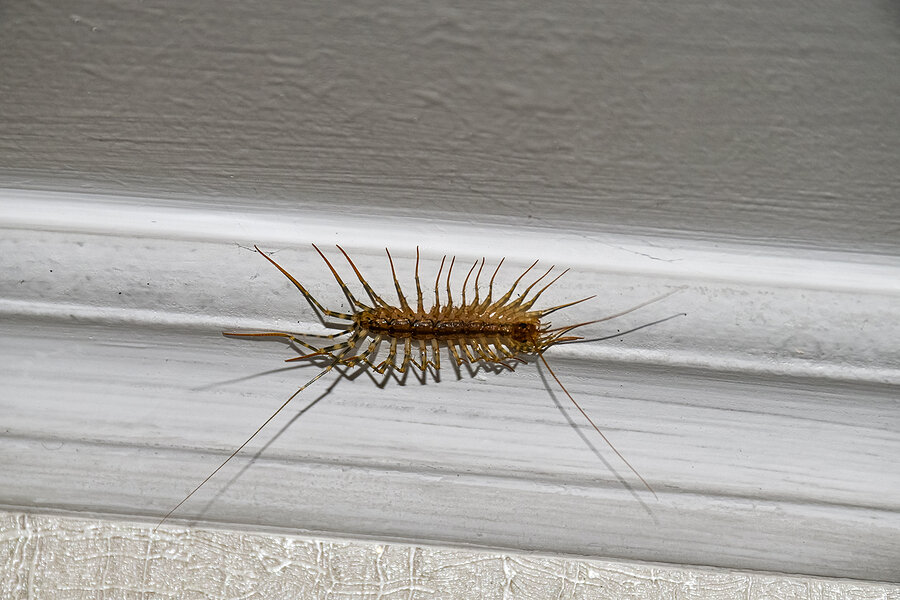While centipedes can be unsettling to find in your home, they aren’t actually harmful to humans and can be quite beneficial to have around. Centipedes will eat almost any other kind of bug (even other centipedes!) and can help keep other pest populations down. While they can bite humans, these instances are rare. They also don’t cause damage to your home. How do you know if you’re just seeing a random bug or if you’re dealing with a full-fledged infestation? Here are some common signs of a centipede infestation.
Seeing Centipedes Inside
The most common sign of a centipede infestation is seeing them in your home. Centipedes are yellow to dark brown with elongated bodies, about 1″ to 1-1/2″ in length. They also have dark stripes running down their backs. They can have up to 15 pairs of legs extending from their bodies with their hind legs longer than the other legs (often mistaken for antennae). Centipedes are usually seen at night and are commonly found near damp areas of your home.
Seeing Other Pests Inside
Centipedes will eat other bugs like ants, roaches, spiders, bed bugs, and silverfish. As the populations of these other pests increase in and around your home, so will centipedes looking for a meal. On the flip side, seeing an increased number of centipedes in your home could also indicate you have a problem with other pests, as well.
Time of the Year
Centipede infestations are more common in spring and fall than they are in summer and winter. Spring is the time of year when centipede eggs hatch. Any overwintering pests that have laid eggs inside your home will emerge in abundance when the weather warms up. Centipedes also become more prevalent in the fall when temperatures start dropping. They can’t survive temps below freezing so they will make their way indoors looking for warmth and shelter during the winter. They are especially attracted to moisture and will often be found in basements and bathrooms.
Centipedes can get into your home through cracks in the exterior or in foundations. Once inside, they’ll then hide out in dark damp places, such as drains, cracks, crevices, bathtubs, and sinks.
Getting rid of centipedes can be a challenge. If you have a problem with centipedes in your home, try:
- Using traps. Sticky traps work best and can be bought at your local hardware store.
- Drying out your home. Centipedes are attracted to moisture. Repair any leaks immediately. Use a dehumidifier when possible.
- Sealing cracks and crevices. Centipedes love to sneak in through small cracks and crevices. Seal or repair these as soon as possible. Use weatherstripping around doors and windows. Use window and door screens when possible, also.
- Pest Control. Because centipedes feed on other pests, consider routine pest control to help keep all of these nuisance pests away from your home. Contact your local pest control company for an evaluation and recommendations.
You May Also Be Interested In:
Termite Control Tips for Summer
Why Do I Have Ants in My Kitchen?

